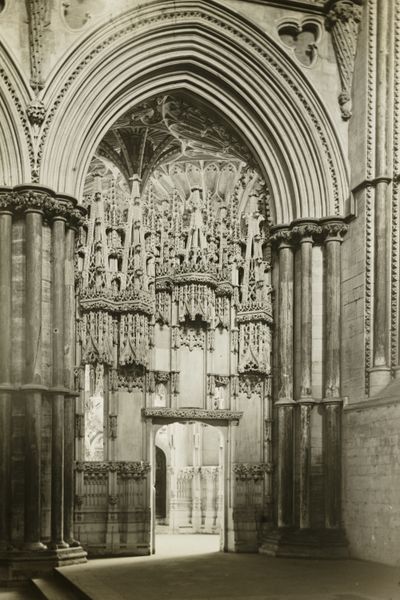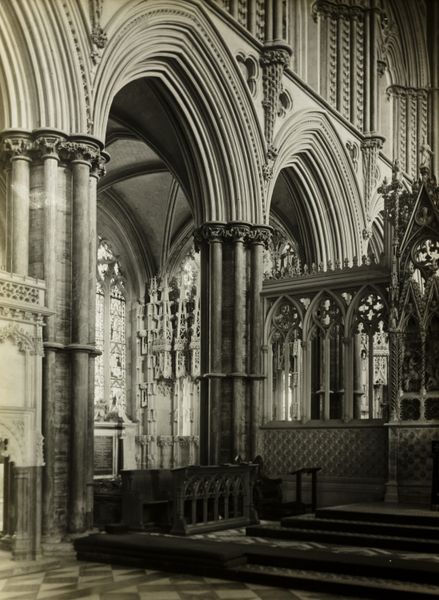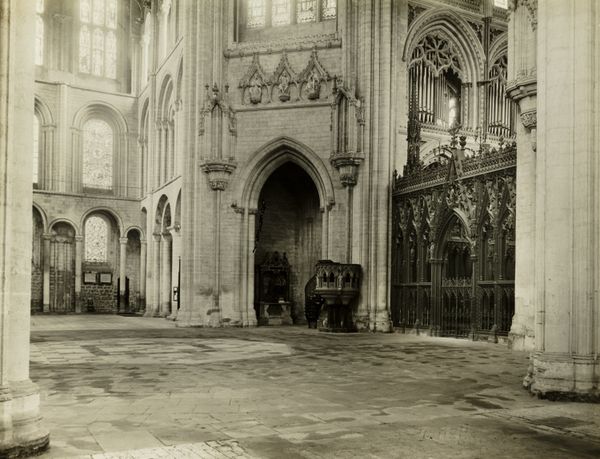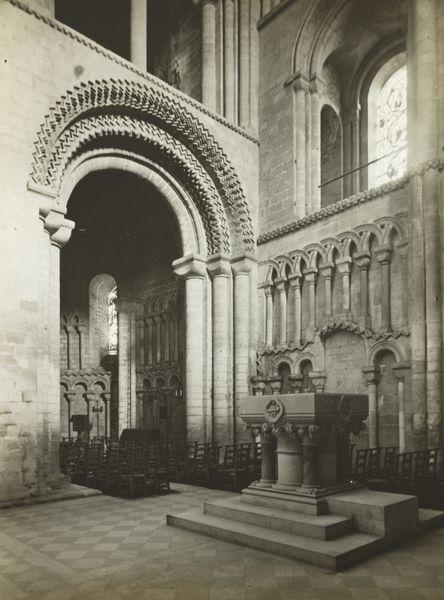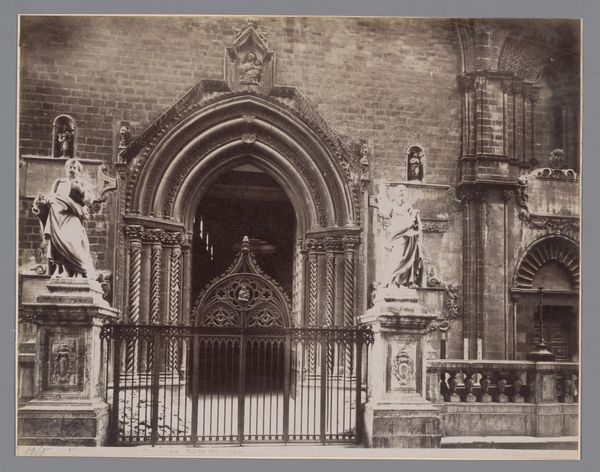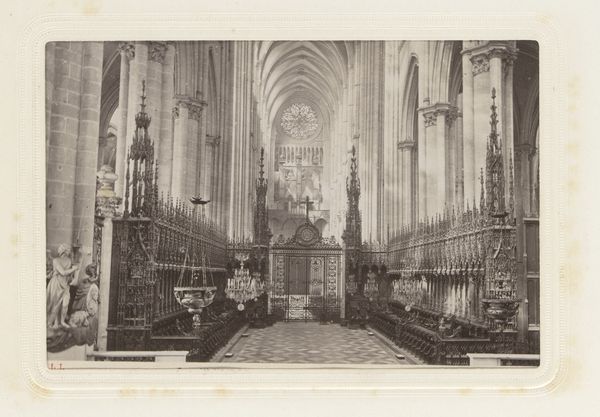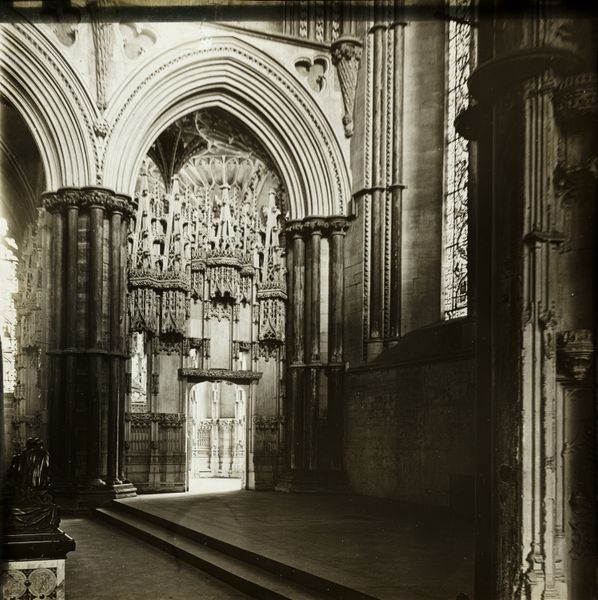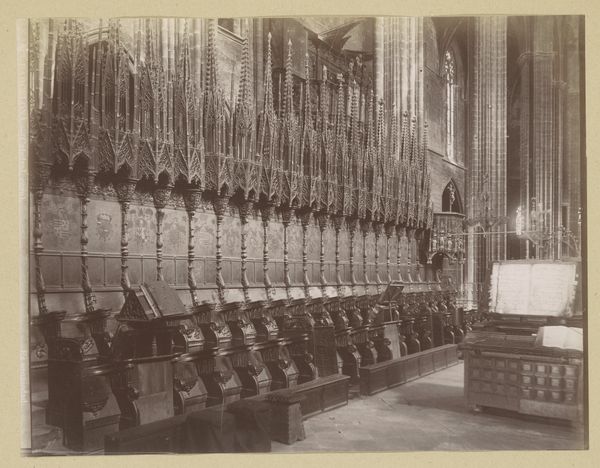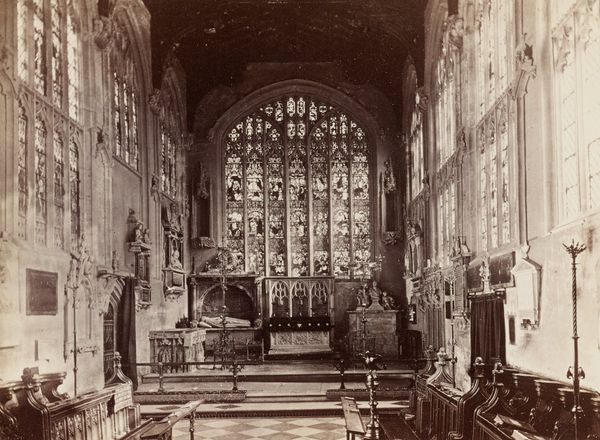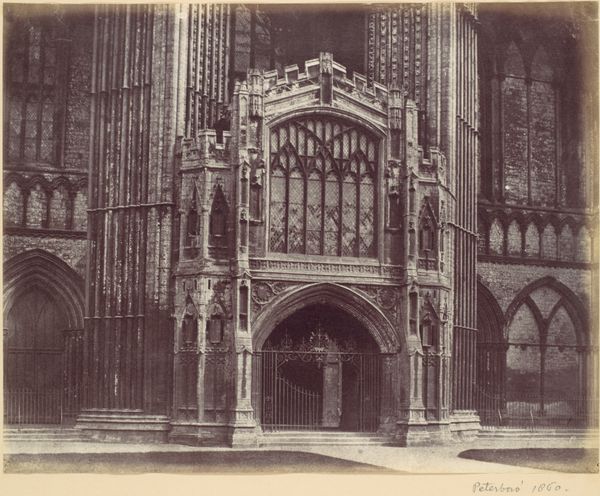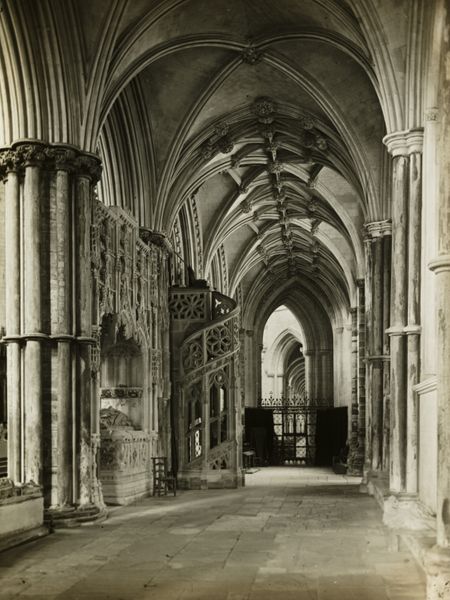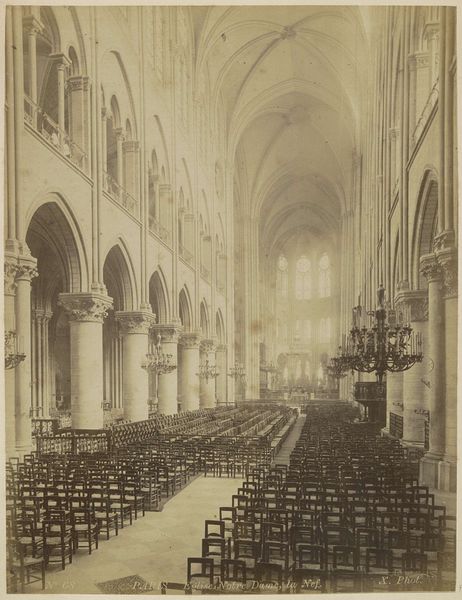
photography, glass
#
16_19th-century
#
pictorialism
#
landscape
#
historic architecture
#
form
#
traditional architecture
#
photography
#
glass
#
line
#
history-painting
Dimensions: 8.2 × 8.2 cm
Copyright: Public Domain
Editor: We are looking at Frederick Evans' "Ely Cathedral: Choir to West," created in 1891. It's a photograph showcasing the interior of the cathedral, specifically the choir area. I’m immediately struck by the composition—how the photograph directs your eye through the ornate details towards the distant architecture. What formal qualities do you find most compelling in this image? Curator: Indeed. Consider the linearity – the receding lines of the choir stalls, balanced by the strong verticals of the columns and the intricate tracery of the screen. This generates a powerful sense of spatial depth, doesn’t it? Evans masterfully uses light and shadow to accentuate these forms. The way the light filters through the arches creates a rhythm that's both visually stimulating and spiritually evocative. The glass is particularly intriguing. Editor: Absolutely, I also find myself trying to understand Evans' intent by using a long exposure and glass. It’s as though he were trying to capture something beyond the immediate physical space. Why do you think he uses glass for this intent? Curator: Observe how the glass heightens the tonal range, transforming stark contrasts into a more nuanced play of light. It's as if Evans sought to dematerialize the architecture, rendering it less as solid mass and more as a luminous construct. In that way, line becomes the subject. Editor: That's fascinating. I never thought about it as dematerializing form, but it makes complete sense given the emphasis on light. So much information here that one misses in passing! Curator: Precisely. Formal analysis encourages a sustained and deliberate encounter with the artwork. It forces us to look closely at the choices made by the artist and the effects they produce, inviting a richer understanding and appreciation of the photographic process.
Comments
No comments
Be the first to comment and join the conversation on the ultimate creative platform.


